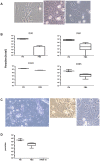Trypanosoma cruzi survival following cold storage: possible implications for tissue banking
- PMID: 24759837
- PMCID: PMC3997359
- DOI: 10.1371/journal.pone.0095398
Trypanosoma cruzi survival following cold storage: possible implications for tissue banking
Erratum in
- PLoS One. 2014;9(12):e114783
Abstract
While Trypanosoma cruzi, the etiologic agent of Chagas disease, is typically vector-borne, infection can also occur through solid organ transplantation or transfusion of contaminated blood products. The ability of infected human cells, tissues, and cellular and tissue-based products (HCT/Ps) to transmit T. cruzi is dependent upon T. cruzi surviving the processing and storage conditions to which HCT/Ps are subjected. In the studies reported here, T. cruzi trypomastigotes remained infective 24 hours after being spiked into blood and stored at room temperature (N = 20); in 2 of 13 parasite-infected cultures stored 28 days at 4°C; and in samples stored 365 days at -80°C without cryoprotectant (N = 28), despite decreased viability compared to cryopreserved parasites. Detection of viable parasites after multiple freeze/thaws depended upon the duration of frozen storage. The ability of T. cruzi to survive long periods of storage at +4 and -80°C suggests that T. cruzi-infected tissues stored under these conditions are potentially infectious.
Conflict of interest statement
Figures




References
-
- Andrade LO, Andrews NW (2005) The Trypanosoma cruzi-host-cell interplay: location, invasion, retention. Nat Rev Microbiol 3: 819–823. - PubMed
-
- Cantey PT, Stramer SL, Townsend RL, Kamel H, Ofafa K, et al. (2012) The United States Trypanosoma cruzi Infection Study: evidence for vector-borne transmission of the parasite that causes Chagas disease among United States blood donors. Transfusion 52: 1922–1930. - PubMed
-
- Leiby DA, Herron RM Jr, Read EJ, Lenes BA, Stumpf RJ (2002) Trypanosoma cruzi in Los Angeles and Miami blood donors: impact of evolving donor demographics on seroprevalence and implications for transfusion transmission. Transfusion 42: 549–555. - PubMed
-
- Centers for Disease Control and Prevention (2006) Chagas disease after organ transplantation—Los Angeles, California, 2006. MMWR Morb Mortal Wkly Rep 55: 798–800. - PubMed
Publication types
MeSH terms
LinkOut - more resources
Full Text Sources
Other Literature Sources

